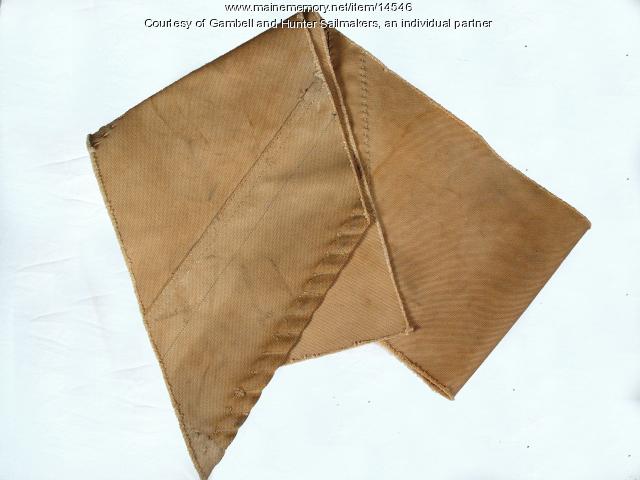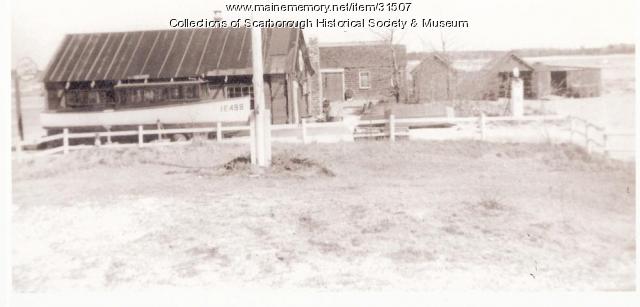Keywords: sail boats
Item 14520
Hand-made canvas sail seam sample, 2003
Courtesy of Gambell and Hunter Sailmakers, an individual partner Date: 2003 Location: Camden Media: Cotton
Item 14546
Fragment of a hand-made canvas sail, ca. 1930
Courtesy of Gambell and Hunter Sailmakers, an individual partner Date: circa 1930 Location: Camden Media: Canvas
Item 37310
158 Commercial Street, Portland, 1924
Owner in 1924: James H McDonald Use: Store & Storage
Exhibit
The Schooner Bowdoin: Ninety Years of Seagoing History
After traveling to the Arctic with Robert E. Peary, Donald B. MacMillan (1874-1970), an explorer, researcher, and lecturer, helped design his own vessel for Arctic exploration, the schooner <em>Bowdoin,</em> which he named after his alma mater. The schooner remains on the seas.
Exhibit
For one hundred years, Acadia National Park has captured the American imagination and stood as the most recognizable symbol of Maine’s important natural history and identity. This exhibit highlights Maine Memory content relating to Acadia and Mount Desert Island.
Site Page
Swan's Island: Six miles east of ordinary - Quarrying
"Boats under sail (in the 1890s) or steam boats, soon thereafter, would come into Burnt Coat Harbor and collect brick sized cut stone."
Site Page
Swan's Island: Six miles east of ordinary - Lobstering
"Boat engines and fishing equipment also changed. Fishing for tuna with a harpoon, Swan's Island, ca."
Story
Florence Ahlquist Link's WWII service in the WAVES
by Earlene Ahlquist Chadbourne
Florence Ahlquist, age 20, was trained to repair the new aeronautical cameras by the US Navy in WWII
Story
An enjoyable conference, Portland 2021
by John C. Decker, Danville, Pennsylvania
Some snippets from a 4-day conference by transportation historians in Portland, September 7-11, 2021
Lesson Plan
Primary Sources: The Maine Shipyard
Grade Level: 9-12
Content Area: Social Studies
This lesson plan will give students a close-up look at historical operations behind Maine's famed shipbuilding and shipping industries. Students will examine primary sources including letters, bills of lading, images, and objects, and draw informed hypotheses about the evolution of the seafaring industry and its impact on Maine’s communities over time.














